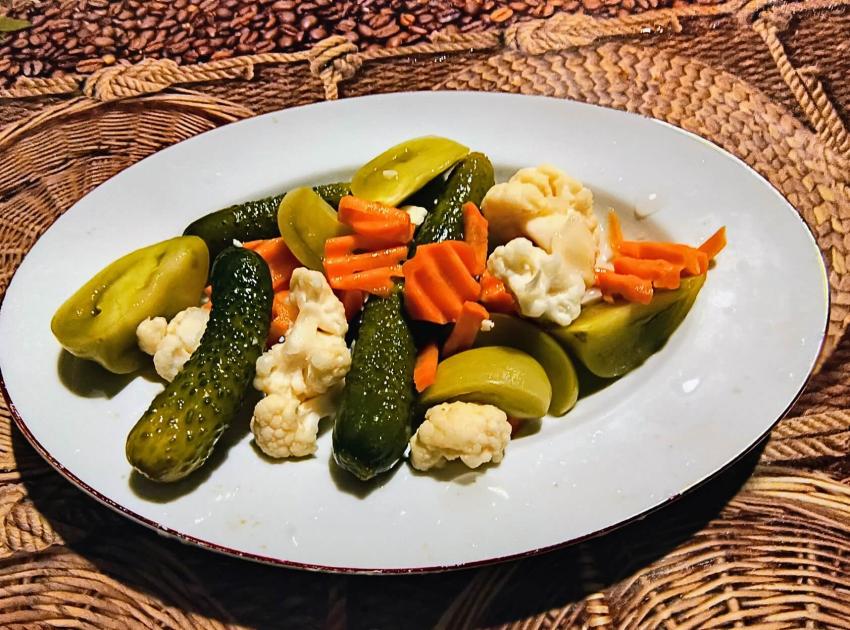
There are different types of pickles, which are basically fermented or preserved vegetables. They are typical for the Balkans and the Middle East. The root of the word “tursh” can be found in the Persian language, meaning “sour.” Here I will present a recipe, or rather the technology for making raw fermented pickles.
Why raw and fermented pickles? Because they are more beneficial as they contain probiotics, which in this case are produced during the fermentation process. You can search Google for the beneficial properties of probiotics, where you will find a wide selection of articles to inform yourself.
In general, there is no great philosophy behind the preparation of raw fermented turşia, but it is important to follow the rules.
As for what vegetables to use, well, they can be very diverse. Personally, I go for gherkins, cauliflower, green tomatoes, peppers, carrots, celery, cabbage, etc. In the case of the photo, there are no peppers because I didn't have any on hand when I made this batch.
Some people prefer to cut the vegetables into larger pieces, for example, some do not cut the green tomatoes but only pierce them. Others put the carrots in whole. I prefer to cut the vegetables into smaller pieces, leaving only the cucumbers whole if they are small; if they are larger, I cut them up too. If your vegetables are cut into small pieces, the pickles will be ready faster.
Depending on the amount of washed and prepared vegetables, you can use different sized containers for fermenting the pickles. These can be large 1.7 or 3 liter jars, an enamel/stainless steel pot, or even a small barrel or tub. Use whatever is convenient for you. Personally, I use 5-liter plastic buckets from lyutenitsa and 1.7-liter glass jars.
Fill the containers with the washed vegetables and add water, measuring exactly how much water will be needed to fill the container. For example, I don't fill the 5-liter bucket completely with vegetables and water, I make sure the water covers the vegetables and leaves a little space for me to put a large plate or something else to press down on the vegetables so they don't float above the water (This is very important, otherwise the ones on top will start to soften).
It is important to know that this type of pickle only requires water and salt, i.e., a salt solution of about 3-4%. That is, 30-40 grams of salt, preferably coarse sea salt, are added to 1 liter of water.
For example, after adding the vegetables to a 5-liter bucket, I added exactly 2 liters of water. I use approximately 4% and I like the taste. Others want it a little less salty and use 3% salt. So 4% salt in 2 liters of water is 80 grams of sea salt. You can also add and dissolve the salt in the water beforehand, which is better. Even if the salt does not dissolve well at first, don't worry.
Once you have placed the vegetables in the containers, it is time to wait for them to ferment. But it is important to stir the pickles every day. I do this in 5-liter buckets because they are convenient. I pour the water from one bucket into another and then pour it back into the first one. This is done 1-2 times a day. I drain the jars into a larger bowl, which I then pour back into the jar.
Depending on the conditions, the pickles should be ready in 10-20 days. The ones in the photo above took about 10 days.
Bon appetit!
Add new comment